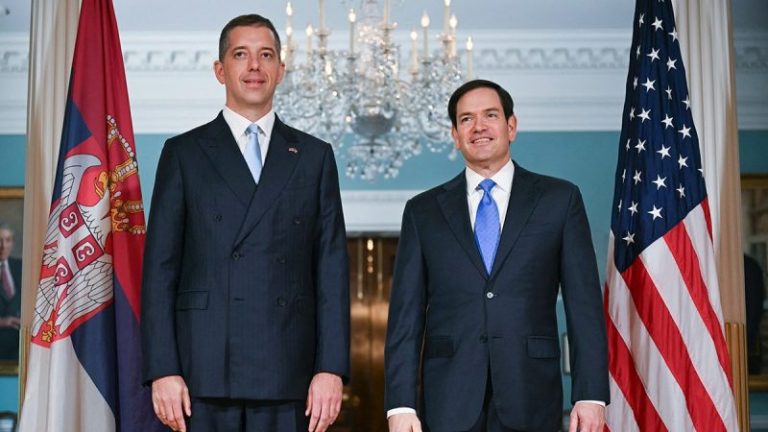Here’s a quick recap of the crypto landscape for Friday (October 24) as of 5:00 p.m. UTC.
Get the latest insights on Bitcoin, Ether and altcoins, along with a round-up of key cryptocurrency market news.
Bitcoin and Ether price update
Bitcoin (BTC) was priced at US$110,645, a 0.3 percent increase in 24 hours. Its lowest valuation of the day was US$109,873, and its highest was US$111,266.
Bitcoin price performance, October 24, 2025.
Chart via TradingView.
Bitcoin’s medium-sized investors are continuing to buy even after the US$19 billion liquidation event earlier this month, preserving the market’s long-term bullish structure, according to CryptoQuant.
Entities holding between 100 and 1,000 BTC have added roughly 907,000 BTC over the past year, which analysts say represents a strong accumulation trend that historically aligns with upward price momentum.
Recent price action reflects this institutional backing, with Bitcoin reclaiming levels above US$110,000 amid softer inflation data and improved market sentiment. However, CryptoQuant warned that short-term demand is softening as the cohort’s 30-day balance has fallen below its moving average, suggesting potential near-term caution until a catalyst, such as renewed exchange-traded fund (ETF) inflows, emerges.
Ether (ETH) was priced at US$3,928.56, a 1.8 percent increase in 24 hours. Its lowest valuation of the day was US$3,872.67, and its highest was US$3,968.61.
Altcoin price update
- Solana (SOL) was priced at US$193.09, at its highest valuation of the day, up by 0.9 percent over the last 24 hours. Its lowest valuation of the day was US$189.23.
- XRP was trading for US$2.51, an increase of 4.2 percent over the last 24 hours and its highest valuation of the day. Its lowest was US$2.46.
Crypto derivatives and market indicators
The cryptocurrency market has experienced some fluctuations with a mixed but generally cautious outlook. The crypto derivatives market has shown some signs of recovery and increased activity after the earlier October volatility.
Liquidations for contracts tracking Bitcoin have totaled approximately US$5.89 million in the last four hours, the majority of which have been short positions, indicating a possible short squeeze or short-covering rally.
This aligns with Bitcoin’s price rebound and trader repositioning after recent dips.
Ether liquidations showed a different pattern; its US$7.01 million liquidations were fairly evenly split between long and short positions, suggesting balanced market dynamics and some ongoing indecision or consolidation.
Futures open interest for Bitcoin was up by 0.4 percent to US$71.27 billion over four hours, indicating growing trader interest and increasing liquidity, with a slight decrease in the final hour of trading. Ether futures open interest moved by +0.86 percent to US$45.94 billion, also showing a modest pullback as markets closed.
The funding rate remains positive, with both Bitcoin and Ether showing it at 0.005, a sign of modest bullish sentiment but not extreme leverage. Bitcoin’s relative strength index stood at 55.4, in a neutral to slightly bullish momentum phase, further supporting a stable recovery rather than a parabolic move.
Fear and Greed Index snapshot
CMC’s Crypto Fear & Greed Index has slightly trended upwards into 32, but remains in fear territory, an improvement from this week’s lowest score (25).
CMC Crypto Fear and Greed Index, Bitcoin price and Bitcoin volume.
Chart via CoinMarketCap
Today’s crypto news to know
Trump pardons Binance founder
US President Donald Trump has granted a full pardon to Binance founder Changpeng Zhao, wiping away his 2024 conviction for violating US anti-money laundering laws. Zhao, better known as “CZ,” served four months in prison and had been barred from running financial ventures under the plea deal.
The move follows months of lobbying by Binance, which paid a record US$4.3 billion fine as part of its own settlement with federal prosecutors. White House Press Secretary Karoline Leavitt called the case “a politically motivated overreach by the Biden administration,” insisting the pardon was meant to correct an injustice.
Critics argue the decision reflects Trump’s growing financial ties to the crypto industry, citing his personal investments and recent push for a “national cryptocurrency reserve.” Zhao thanked Trump on social media, saying he is “deeply grateful” for the decision and eager to “continue supporting innovation responsibly.”
Bitfarms surges on Jane Street investment
Crypto miner Bitfarms (TSX:BITF) saw its shares surge on Friday after trading firm Jane Street said it has acquired a 5.4 percent ownership stake in the company, as well as a 5 percent stake in Cipher Mining (NASDAQ:CIFR).
This move from a major institutional market maker, known for its strategic investments in the digital asset space, highlights the growing institutional involvement in cryptocurrency mining businesses and their expanding role within the tech sector’s market rally.
Polymarket confirms POLY token launch
Prediction platform Polymarket has confirmed plans to launch its long-awaited POLY token following a US$2 billion investment from Intercontinental Exchange (ICE), the parent company of the New York Stock Exchange.
Speaking on the Degenz Live podcast, Chief Marketing Officer Matthew Modabber said both the token and airdrop are “officially in motion,” confirming rumors that have swirled for months.
Modabber emphasized that the launch will prioritize real utility and “long-term viability,” aligning with Polymarket’s push to relaunch its US app after receiving fresh regulatory clearance.
Sygnum Bank, Debifi partner for multiSYG Bitcoin lending product
Sygnum Bank has partnered with Debifi, a Bitcoin-backed lending platform, to introduce MultiSYG, a new multisignature Bitcoin lending product slated for launch in the first half of 2026.
MultiSYG allows clients to borrow fiat currencies against their Bitcoin holdings. These Bitcoin assets are held in a 3-of-5 multisig escrow wallet, with keys distributed to the borrower, Sygnum and independent signers. This structure ensures borrowers maintain partial control and on-chain cryptographic proof of their collateral for the loan term.
The product is designed to enhance transparency and security in lending by preventing rehypothecation and eliminating the need for blind trust in custodians, which are common issues in traditional lending practices. MultiSYG is specifically tailored for institutional and high-net-worth clients seeking bank-grade terms and flexible loan services.
JPMorgan to let institutions borrow against Bitcoin, Ether holdings
JPMorgan Chase (NYSE:JPM) is preparing to let its institutional clients borrow cash using Bitcoin and Ether as collateral. Set to launch by the end of 2025, the initiative will allow the firm’s clients to pledge cryptocurrencies directly rather than through ETFs, using a third-party custodian to safeguard tokens.
The pilot follows successful internal testing involving BlackRock’s iShares Bitcoin Trust ETF (NASDAQ:IBIT) earlier this year. JPMorgan already accepts crypto-linked ETFs as loan collateral.
Crypto.com applies for national trust bank charter
Crypto.com has applied to the US Office of the Comptroller of the Currency for a National Trust Bank Charter.
This federal charter would enable Crypto.com to provide regulated crypto financial services across the US, including custody and staking. The company plans to focus on institutional clients, offering solutions such as digital asset treasuries, ETFs and corporate custody. This move signifies Crypto.com’s progression towards compliance with traditional financial regulations and the expansion of its regulated presence in the US.
Securities Disclosure: I, Giann Liguid, hold no direct investment interest in any company mentioned in this article.
Securities Disclosure: I, Meagen Seatter, hold no direct investment interest in any company mentioned in this article.










